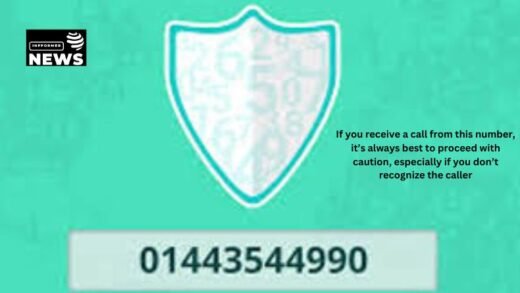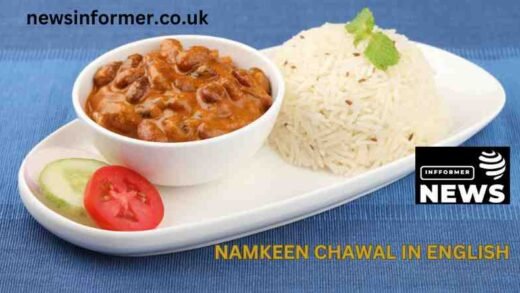Exploring the Wordle Craze: Why This Simple Word Game Took Over the World
Introduction to Wordle’s Phenomenon
In the digital age, games come and go, but few have left as significant a mark as Wordle. This simple yet addictive word puzzle game has captivated millions of people worldwide, transforming from a fun side project into a daily routine for many. But what exactly is Wordle? Why has this five-letter word game managed to break through the noise of more elaborate games and become a global phenomenon? In this article, we’ll delve into the origins, mechanics, popularity, and cultural impact of Wordle.
What is Wordle?
Wordle is a straightforward online game that gives players six attempts to guess a hidden five-letter word. Each guess generates feedback through a color-coded system: green for correct letters in the right position, yellow for correct letters in the wrong position, and gray for letters that are not part of the word. Players must use a process of elimination and logical deduction to identify the hidden word before running out of attempts.
The game’s simplicity is one of its strongest features. There are no distractions, ads, or complicated levels to master. It’s just a game of words, logic, and persistence. Moreover, it doesn’t require any downloads—players can simply access it through a web browser, making it incredibly accessible to anyone with an internet connection.
The Origins of Wordle
Josh Wardle, a software engineer, originally created Wordle as a private game for his partner, who enjoyed playing word games. It was meant to be a fun, no-frills way to challenge her word skills. In October 2021, Wardle made the game public, and within months, it had grown into a viral sensation, played by millions of people across the globe.
In early 2022, Wordle was acquired by The New York Times, signaling just how impactful the game had become. The newspaper, known for its crossword puzzles and word games, saw Wordle as a natural fit within its digital puzzle offerings. Despite concerns that the acquisition might lead to changes in the game’s free and ad-free nature, the game has largely remained as it was initially created.
How to Play Wordle Like a Pro
While Wordle might seem like a simple word game, mastering it requires a strategic approach. Here’s a step-by-step guide on how to maximize your chances of guessing the word within six attempts:
- Start with Common Vowels and Consonants: For your first guess, it’s a good idea to use a word that contains a mix of common vowels (like “a” and “e”) and consonants (like “t” and “r”). Words like “crate,” “slate,” or “plane” are popular choices because they provide a good mix of frequently used letters. This increases your chances of revealing at least some correct letters early on.
- Analyze the Color Feedback: Once your first guess is submitted, the color-coded feedback will guide your next move. Green tiles show letters that are correct and in the right position, while yellow tiles indicate letters that are part of the word but in the wrong position. Gray tiles mean the letters are not in the word at all.
- Adjust Based on Feedback: With each subsequent guess, use the information provided by the color system to narrow down the possibilities. Avoid repeating letters that have been marked as gray, and try to reposition yellow-lettered tiles to discover their correct locations.
- Limit Trial and Error: Wordle gives you a limited number of guesses (six), so don’t rely too heavily on trial and error. Use logic and think critically about each new guess, especially as the game progresses. The fewer guesses you use, the more satisfying the win!
- Be Mindful of Word Patterns: After a few rounds of Wordle, players often begin to recognize certain patterns or common word structures. For instance, certain letter combinations, such as “th,” “ch,” or “st,” frequently appear in English words. Keep these common structures in mind as you make your guesses.
The Social Element of Wordle
One of the key reasons behind Wordle’s rapid rise to fame is its built-in social sharing feature. After completing each game, players are given the option to share their results on social media using a grid of color-coded squares that reveal how many attempts it took to guess the word without giving away the actual solution. This simple feature added a competitive edge to the game, as players could challenge friends and followers to beat their score.
Wordle’s viral spread was largely fueled by these shared results, which quickly took over platforms like Twitter, Facebook, and Instagram. What’s more, this non-spoiler format allowed everyone to participate in discussions about the game without ruining the experience for others. The result was a sense of community, even among complete strangers, as people bonded over their daily Wordle successes (or failures).
The Psychology of Wordle: Why It’s So Addictive
What makes Wordle so captivating? Several psychological factors contribute to its addictive nature.
Firstly, the game offers what psychologists call a variable reward system. This type of reward system is known to trigger dopamine release in the brain, the same chemical involved in pleasure and addiction. Since Wordle presents a new challenge each day and players have limited attempts to solve it, the act of solving the puzzle provides a rush of satisfaction, while the daily format builds anticipation for the next challenge.
Secondly, the game taps into the human need for routine and consistency. Wordle’s daily challenge becomes part of many players’ morning or evening routines, similar to reading the news or doing a crossword. For some, it’s a ritualistic way to start or end their day.
Finally, Wordle succeeds because it strikes a perfect balance between being mentally challenging and relaxing. There’s no time pressure or complex game mechanics to navigate, allowing players to enjoy the puzzle at their own pace without feeling stressed. The game is difficult enough to provide a sense of accomplishment but not so challenging that it feels discouraging.
Wordle’s Impact on the Puzzle and Gaming World
Wordle’s popularity has had a profound effect on the puzzle gaming genre. While word games have always enjoyed niche popularity, Wordle’s rise to mainstream success has reinvigorated interest in language-based games. Other word puzzle games such as Spelling Bee, Crosswords, and Scrabble have also seen a resurgence in player numbers as people seek out similar intellectual challenges.
Moreover, Wordle has inspired numerous spin-offs and variations, each adding its unique twist on the format. Some notable examples include:
- Dordle: A version where players must guess two words at the same time.
- Quordle: An even more challenging variant with four words to solve simultaneously.
- Nerdle: A math-based puzzle where players must guess a mathematical equation instead of a word.
These variations have helped to maintain the excitement surrounding Wordle by offering players new challenges once they’ve mastered the original game.
Wordle and The Role of The New York Times
The acquisition of Wordle by The New York Times in early 2022 marked a significant moment in the game’s history. Many speculated whether the game would undergo major changes, such as the introduction of ads or a paywall. However, to date, The New York Times has largely kept the game unchanged, continuing to offer the same ad-free, minimalist experience that initially attracted players.
The New York Times has, however, integrated Wordle into its suite of puzzle games, which includes its iconic crossword puzzle, the Spelling Bee, and more. The newspaper has also taken steps to preserve Wordle’s integrity by ensuring that it remains free for all players, at least for the time being.
The Future of Wordle
As Wordle continues to evolve, its future remains an interesting topic of discussion. Will it maintain its current popularity, or will the hype fade as more complex and visually appealing games take over? While the game’s viral growth has slowed since its peak, it has solidified its place in the world of online puzzles. Its simplicity, accessibility, and daily challenge make it a unique game that could have lasting appeal.
One thing is certain: Wordle has already left an indelible mark on gaming culture. Whether you’re a casual player or a die-hard fan, Wordle’s combination of fun, challenge, and community has made it a standout success in the crowded world of online games.
Conclusion: Why Wordle is Here to Stay
At first glance, Wordle may seem like a simple word game, but its appeal lies in its blend of challenge, routine, and social connection. The game’s minimalist design, combined with the satisfaction of cracking a daily puzzle, ensures that it holds a special place in the hearts of players across the globe. As long as The New York Times continues to keep the game accessible and true to its roots, Wordle seems destined to remain a beloved part of many people’s daily routines.
Whether you’re looking for a quick mental workout or a way to connect with friends over shared challenges, Wordle offers something for everyone.
Read also: check





























































